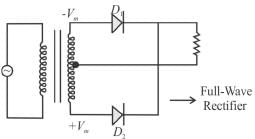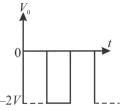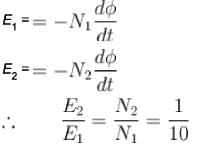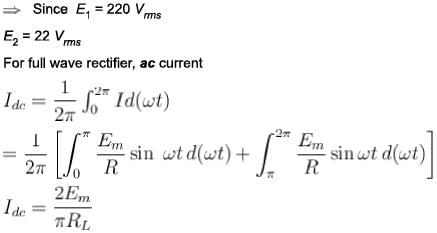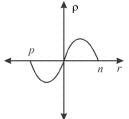Semiconductor Diode MCQ Level – 2 - Physics MCQ
10 Questions MCQ Test Topic wise Tests for IIT JAM Physics - Semiconductor Diode MCQ Level – 2
The voltage across a diode in a full-wave rectifier having input voltage of peak value Vm during its non-conducting period is :
When reverse voltage across silicon diode is changed from 4V to 8 V, what happens to depletion layer?
| 1 Crore+ students have signed up on EduRev. Have you? Download the App |
When two identical zener diodes are connected in series, what happens to the breakdown voltage of the combination ?
For the clamping network shown below, the resulting output for the applied input will be.

A sinusoidal input voltage Vin of frequency ω is fed to the circuit shown in the figure where  if Vm the Peak value of the input voltage, then output voltage (Vout) is.
if Vm the Peak value of the input voltage, then output voltage (Vout) is.

An ac voltage of 220 Vrms is applied to the primary of a 10:1 step-down transformer. The secondary of the transformer is centre tapped and connected to a full-wave rectifier with a load resistance. This dc voltage appearing in the load is.
The value of I and V for the circuit shown below are
A p-n diode is reverse biased. The resistance measured by an ohm-meter connected across it will be.
Which graph represents the nature of the curve between charge density p and distance r near the depletion region of p-n junction diode?


